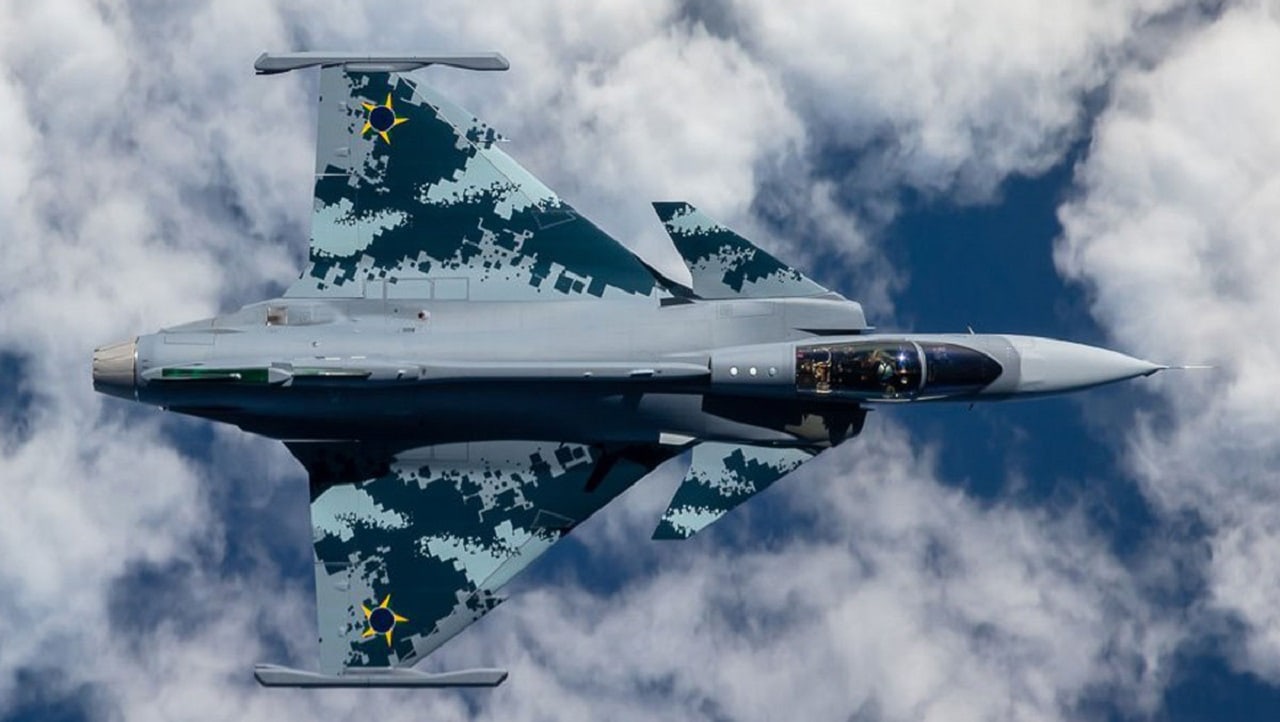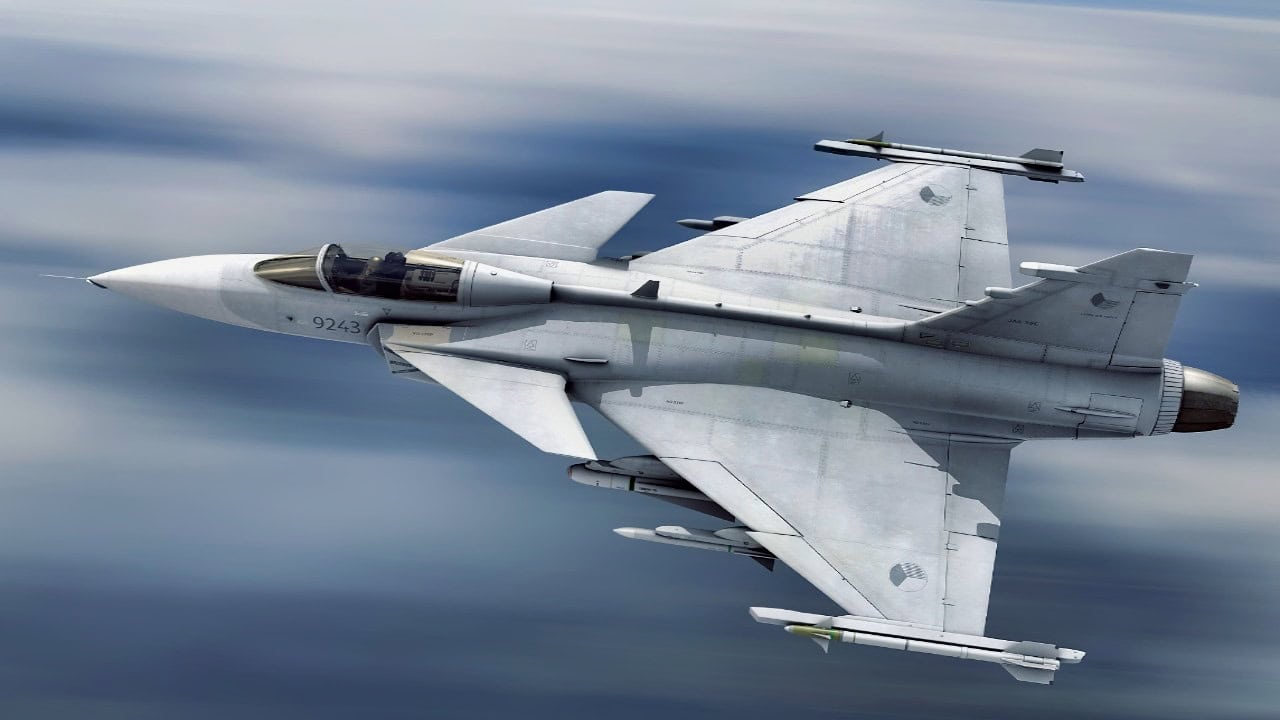Key Points and Summary: Canada’s F-35 fighter purchase faces renewed uncertainty under Prime Minister Mark Carney due to severe political friction with the US Trump administration.
-This review revisits a long, controversial procurement history marked by delays and political battles.
-While Canada committed to 88 F-35s in 2023 after a lengthy competition, concerns about cost and US control over the platform persist.
-Sweden’s Saab is actively promoting the JAS 39 Gripen—which performed well in Canadian trials—as an alternative, offering affordability, NATO/NORAD compatibility, and full operational sovereignty, presenting Ottawa with a complex choice between capability, cost, and strategic autonomy.
JAS 39 Coming to Canada?
Until recently, Canada was dead set on acquiring F-35 Lightning II fighters from the US. With recent comments from President Trump and the ongoing trade war between the US and Canada, the Canadians have been reevaluating whether the F-35 is the best fighter for them.
Skeptical as they might be, Canada is already locked into receiving 16 fighters. The question remains whether Canada will drop the remaining fighters it ordered and pursue a different option to modernize its fleet.
Canada’s Controversial History with the F-35
Canada first became interested in the F-35 way back in 1997 when it joined the Joint Strike Fighter (JSF) project as an “informed partner.”
This initial participation required a $10 million investment, enabling Canada to participate in the evaluation process. Over the years, Canada committed additional funds to the project, becoming a level three participant alongside countries like Norway, Denmark, Turkey, and Australia.
In 2010, Prime Minister Stephen Harper’s Conservative government announced its intention to procure 65 F-35s to replace the aging CF-18 Hornets. This decision was met with significant controversy, particularly regarding the cost and the sole-sourced nature of the contract with Lockheed Martin. The estimated cost of the procurement was $9 billion, with ancillary costs bringing the total to $16 billion. Critics argued that these estimates were exaggerated, including costs like pilot salaries and fuel, which were not typically factored into procurement costs.
The F-35 procurement became a major political issue in Canada, contributing to the defeat of the Conservative government in 2011 through a non-confidence vote. The procurement was labeled a national “scandal” and “fiasco” by the media following a highly critical Auditor General report in 2012. Despite these challenges, the Conservative government continued to push for the F-35 purchase, although it did not feature prominently in subsequent election platforms.
Canada Needed the F-35
In January 2023, the Canadian government confirmed its decision to procure 88 F-35A advanced fighter aircraft. This decision was one of the most expensive investments by the Royal Canadian Air Force (RCAF) in over 30 years, with an estimated cost of $19 billion.
The procurement process included a competition among various other aircraft types to ensure the best aircraft at the right price for Canadians in which the F-35 firmly showed its superiority.
Whether Canada likes it or not, the first batch of 16 aircraft is expected to be delivered starting in 2026, with the full fleet arriving by 2032. This gradual transition was intended to allow the RCAF to phase out the CF-18s while maintaining its defense capabilities.
In the interim, Canada procured Australian F-18s to supplement its existing fleet and extend the life of the CF-18s through the Hornet Extension Project.
Politics Killed the F-35?
Recent tensions with President Donald Trump have soured Canada’s perception of the F-35. Canadian Prime Minister Mark Carney has asked Defense Minister Bill Blair to review the purchase of America’s F-35 fighter jet to see if there are other options “given the changing environment.”
The deal hasn’t yet been scrapped, but the government needs to “make sure that the contract in its current form is in the best interests of Canadians and the Canadian Armed Forces,” a defense ministry spokesperson said.
However, Canadian officials in the private sector and in the military still believe the F-35 is the best option for Canada.
According to an article by the Ottawa Citizen, many officials in the RCAF are still in favor of the F-35 and are hesitant to even consider altering the existing order.
In the private sector, the head of Canadian jet manufacturer Bombardier Inc. raised concerns about potential fallout from abandoning the F-35. Bombardier Inc., as well as many other local Canadian industries, is heavily reliant on the U.S. for business. If Canada were to step away from the F-35 order, the U.S. may consider taking similar measures against Canadian manufacturers, which would significantly harm these businesses.
Canada Eyes the JAS 39 Gripen
In search of a possible replacement for the F-35, Canada has recently been considering the Swedish-built Saab JAS 39 Gripen. In April of this year, Saab CEO Micael Johansson confirmed during an interview with Dagens industry that talks are ongoing with Canada regarding the JAS 39 Gripen fighter aircraft.
One of the advantages of the Gripen is its interoperability with other NORAD/NATO systems, making it easy to integrate into Canada’s defense structure.

Sweden JAS 39 Fighter. Image Credit: Creative Commons.
Additionally, Saab confirmed that Canada will have full sovereignty over its fighters, enabling them to experiment and upgrade them at will, a feature which America does not allow for its F-35s
The Saab Gripen entered trials in Canada back in 2019 where Sweden proposed to sell the aircraft to the RCAF. In competitions, the Gripen finished second only to the F-35 and fulfilled all of Canada’s procurement requirements.
Saab stated throughout the trial period that it was ready to supply the full 88 fighters at any moment. As a replacement for the F-35, the Saab Gripen is probably Canada’s best choice.
While the fighter lacks stealth capabilities, it is more affordable, easily integrable with NORAD/NATO systems, and is a fully capable fighter jet.
About the Author:
Isaac Seitz, a 19FortyFive Defense Columnist, graduated from Patrick Henry College’s Strategic Intelligence and National Security program. He has also studied Russian at Middlebury Language Schools and has worked as an intelligence Analyst in the private sector.

